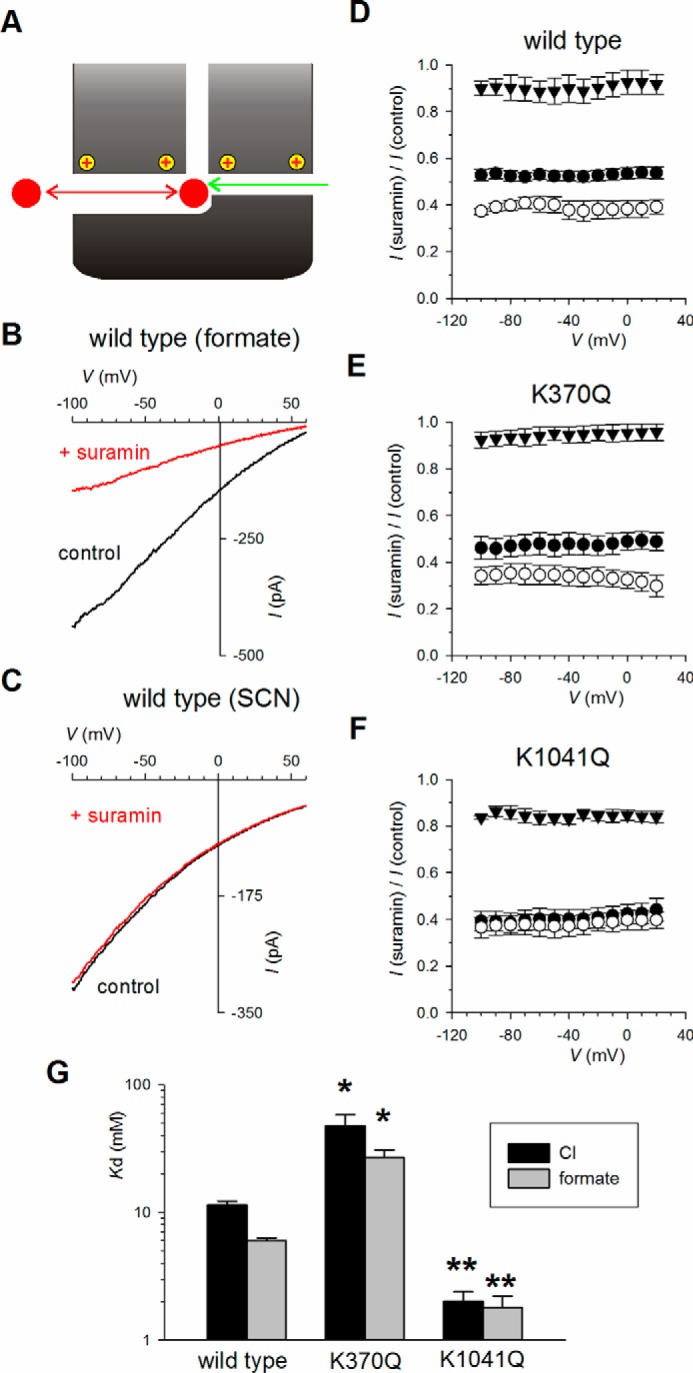Figure 5.

Interaction between intracellular permeant anions and suramin. A, hypothetical model (derived from Fig. 1F) in which permeant anions entering via a secondary portal are able to compete with suramin entering via a separate, primary portal and thereby indirectly weaken suramin's blocking effect (see “Results”). B and C, example macroscopic current–voltage relationships for wildtype in inside-out patches when extracellular NaCl (see Fig. 3A) had been substituted by sodium formate (B) or NaSCN (C). In each case currents were recorded before (control, black) and after (red) addition of 10 μm suramin to the intracellular solution. D–F, mean fraction of control current remaining following addition of suramin as a function of voltage in wildtype (D), K370Q (E), or K1041Q (F), when the extracellular solution contained NaCl (●), sodium formate (○), or NaSCN (▾). Note that different concentrations of suramin were used to give similar degrees of inhibition (with Cl−-containing solutions) in these differentially suramin-sensitive channel constructs: 10 μm (wildtype), 50 μm (K370Q), and 3 μm (K1041Q). G, mean Kd (at −100 mV) calculated from data such as that shown in D–F as described under “Experimental Procedures” (Equation 1) when the extracellular solution contained NaCl (black bars) or sodium formate (gray bars). Asterisks indicate a significant difference from wildtype. *, p < 0.01; **, p < 0.0001. Because block by this concentration of suramin was so weak when SCN− carried current, Kd could not be determined accurately for any variant. The means of data from 4–6 patches are shown in D–G.
